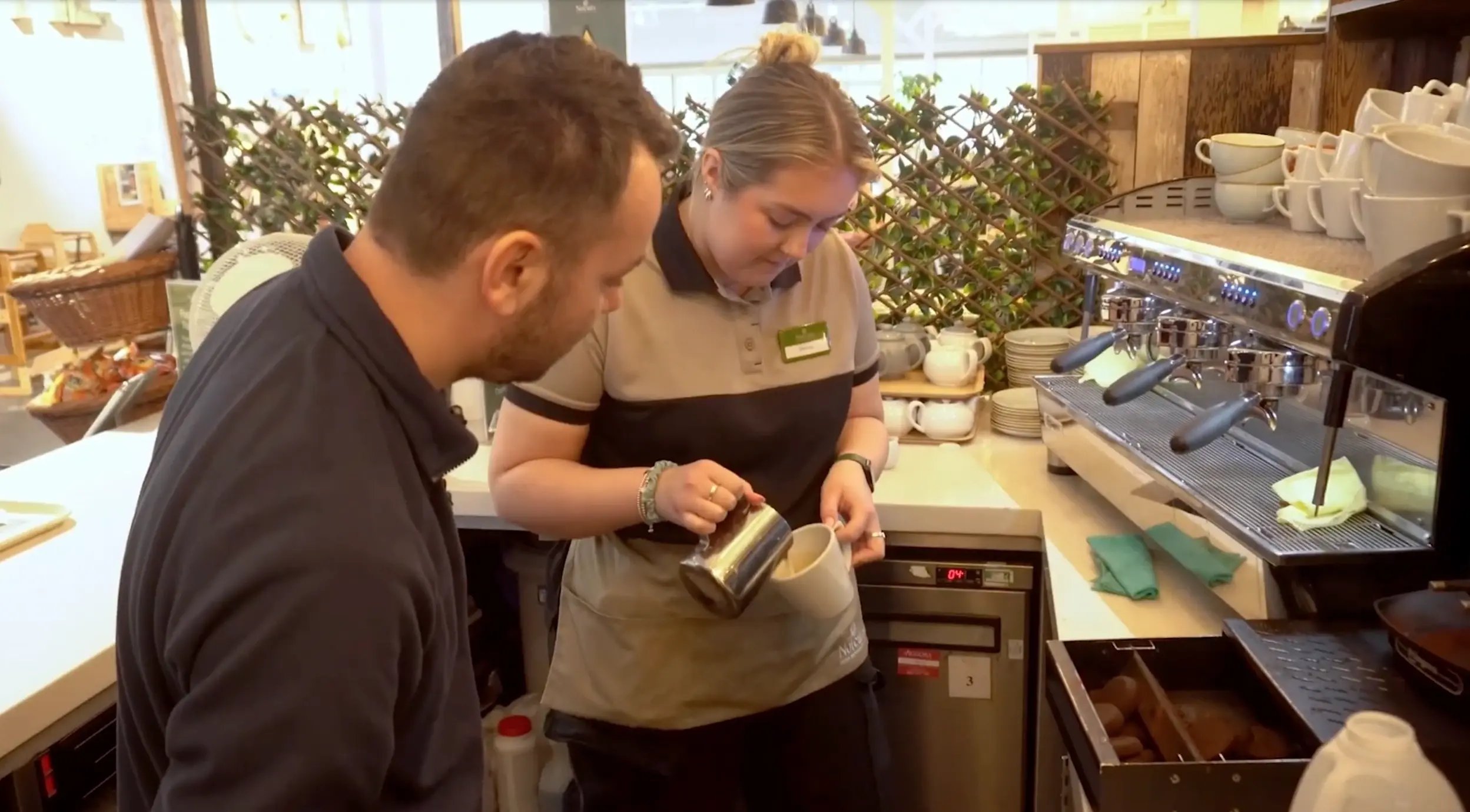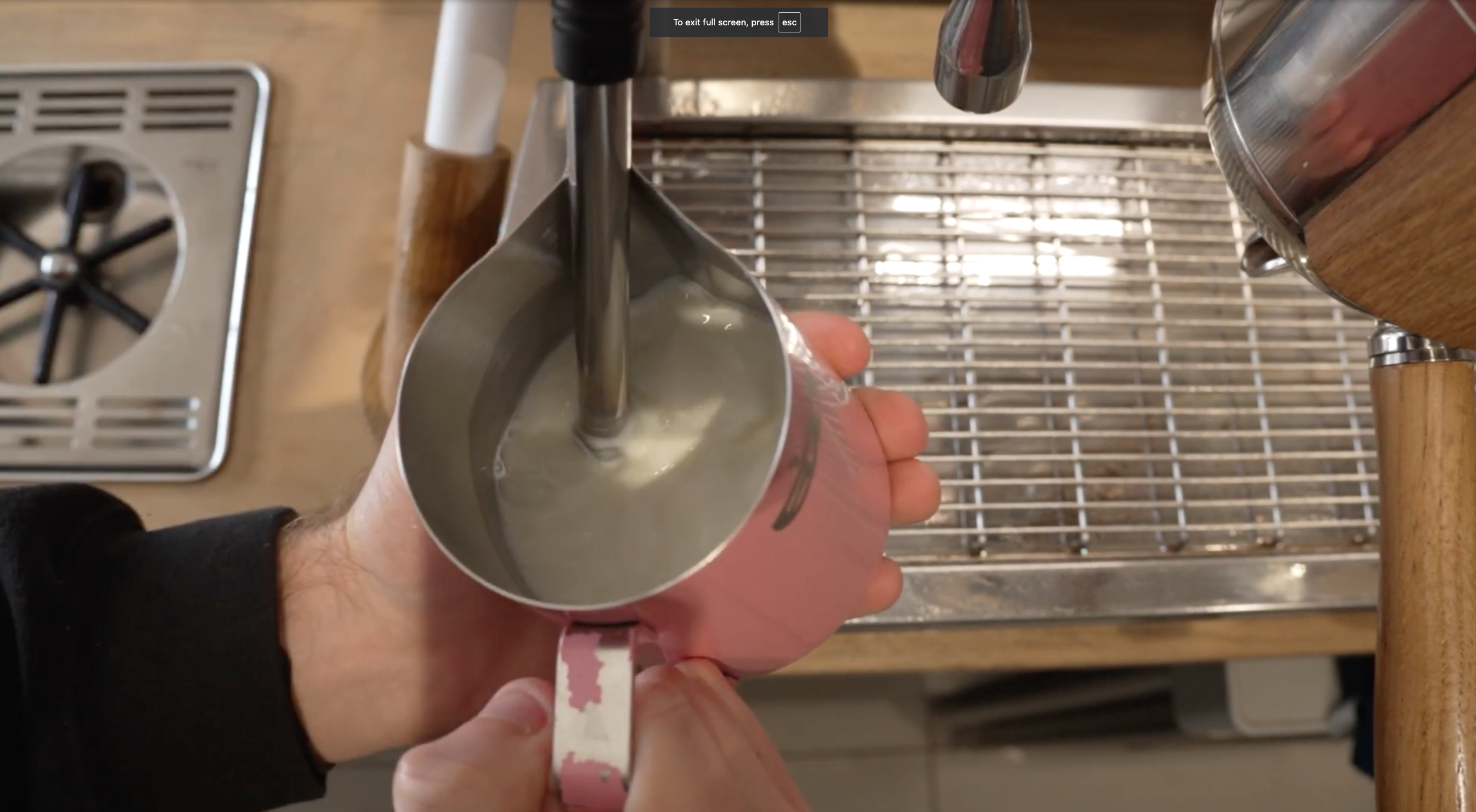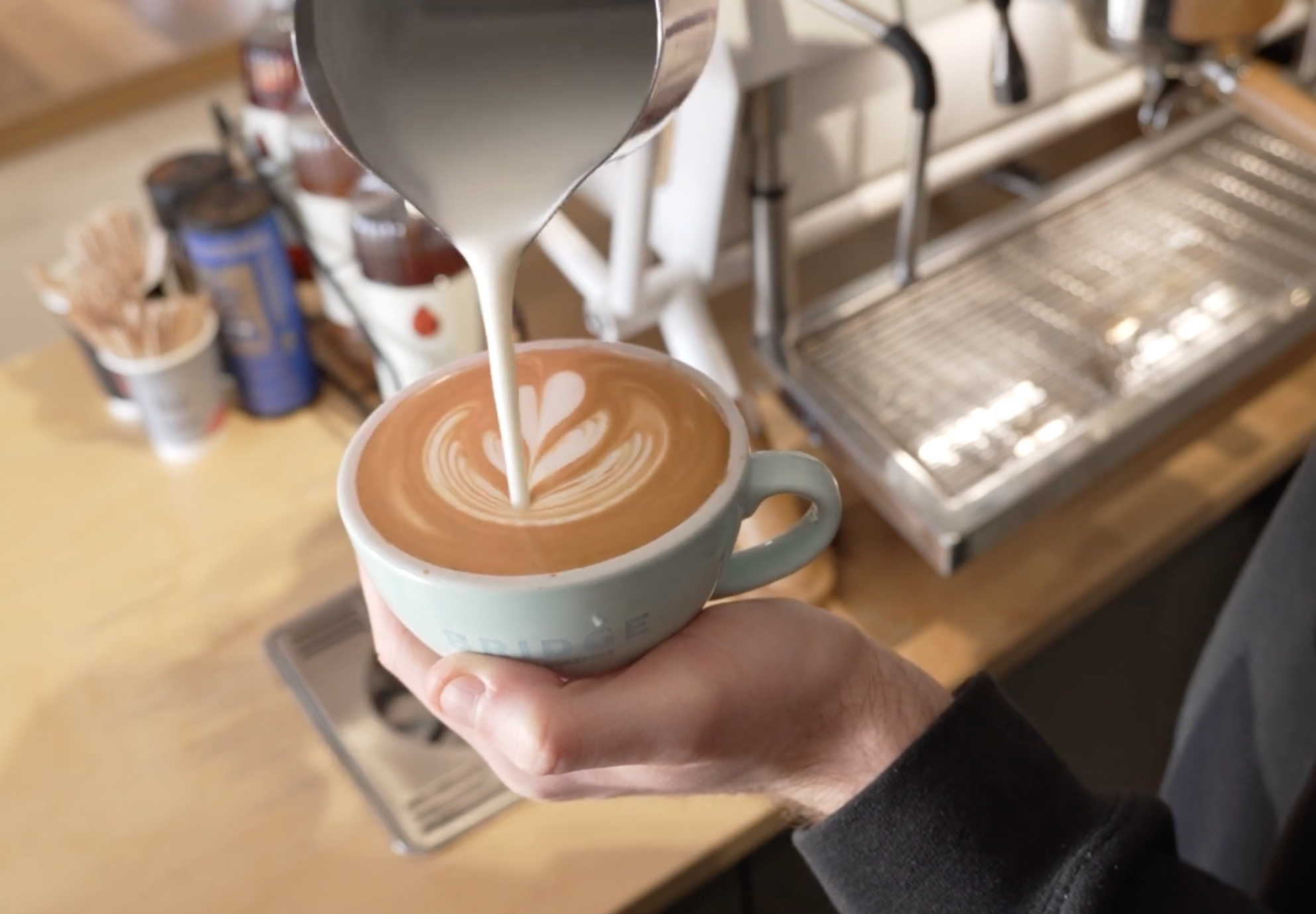24 April 2025
What Training do Baristas Need? Staff Onboarding Guide
Jack Merriman
Digital Marketing Manager
Hiring a new barista? Whether they’re completely new to coffee or have some experience, your training process plays a huge role in the quality of drinks they serve and how quickly they become a valuable part of your team.
In this guide, we break down the core elements of barista training you should cover to get your team confident, competent, and customer-ready.
Start with Your Coffee Supplier (Training)
When a new barista joins your team, your first port of call should be your coffee supplier. Most good wholesale roasters offer barista training as part of their support package. Some will visit your site to train your staff in person. Others might invite you to their training space, giving your team a chance to get hands-on with professional equipment in a dedicated setting.
In some cases, your supplier may even offer certified courses. While these often come at a cost, they’re a brilliant way to invest in high standards and help your new team members understand coffee more deeply from the outset.
Don’t be afraid to ask what resources are available. Many suppliers provide support from an account manager or in-house coffee trainer. They may also offer online resources—like YouTube tutorials, printable guides, or digital training manuals—that your baristas can refer to any time. These materials are especially useful for reinforcing in-person sessions and speeding up the learning process during quieter shifts.
Whether you’re starting from scratch or just refreshing skills, your supplier can be one of your greatest training assets.
Food Safety and Hygiene
Baristas don’t need formal qualifications to get started with coffee—but that doesn’t mean hygiene training is optional. In the UK, your business has a legal duty to make sure every team member receives appropriate training for their role. That includes anything related to health, safety, and hygiene.
If your new team member hasn’t had any previous training, it’s a good idea to enrol them in a basic Level 2 Food Hygiene course. These are widely available online, usually take around two to three hours to complete, and include a short test at the end. Once passed, the barista receives a certificate, giving you proof that they’ve received the necessary training.
These short courses cover everything from safe food handling and allergen awareness to personal hygiene and general safety standards. Best of all, there are plenty of free or low-cost options out there, so it doesn’t have to impact your budget.
Making food safety part of the initial onboarding process is an easy win. It keeps your team informed, protects your customers, and ensures your business stays compliant from day one.
Coffee Skills and Espresso Techniques
Getting a new barista confident with espresso starts with understanding the core elements of extraction. That means dose, yield, and time. These three variables—how much coffee goes in, how much liquid comes out, and how long the shot takes—are the building blocks of a balanced cup.

The best way to teach this? Let them taste it. Show them what a sour, under-extracted espresso is like. Then compare it to a bitter, over-extracted one. That hands-on tasting exercise will stick in their memory far more than any diagram or lecture.
From there, move on to grinder adjustments. Teach them how a finer grind slows things down, and a coarser grind speeds things up. Let them experiment, watch the results, and start to understand how small changes affect the final cup.
They’ll also need to get comfortable with the espresso-making workflow: purging the group head, prepping and dosing the portafilter, tamping with consistent pressure, and keeping everything clean. This part is all about repetition. The more consistent the process, the more consistent the drinks.
Milk Steaming and Texture
Steaming milk properly is one of the trickiest parts of the job—and one of the most important. A great espresso means nothing if it’s topped with thin, bubbly milk.

Start by helping your new baristas choose the right jug size. Show them how to fill it to just below the bottom of the spout. Then, focus on steam wand placement. It should sit just off-centre and slightly under the surface, creating a vortex that pulls the milk into motion.
During the first few seconds of steaming, they should hear that gentle hissing sound. That’s the air being incorporated—just a little is enough. Then they let the milk spin, smoothing out bubbles and creating that perfect, glossy microfoam.
Let them practise. A lot. Even using water or oat milk can be helpful for building muscle memory. And if your supplier has videos or can pop in for a demo, take full advantage.
Drinks Menu and Drink Building
Once your baristas are confident with espresso and milk, it’s time to dive into the drinks menu. Don’t overcomplicate things. Keep it simple to start.
Stick to the core five: espresso, flat white, cappuccino, latte, americano. These are the drinks most customers will ask for, and mastering them will give your team a strong foundation to build from.
It also helps to assign specific cup sizes to each drink. A flat white always goes in the smaller cup, a latte in the larger one. That visual cue alone makes it easier for new baristas to get the ratios right without second guessing.
Let them build each drink a few times, one after the other. Repetition is your friend here.
Latte Art Fundamentals
Latte art is a long game. But that doesn’t mean you shouldn’t start early.
Once your baristas are steaming consistently good milk, introduce the basics of pouring. Show them how to tap out any remaining bubbles, then swirl the milk to reintegrate the foam. It should look smooth and glossy in the jug before they pour.

Start the pour from a slight height to mix the milk with the coffee. Then lower the jug when they’re ready to create the pattern. A simple heart is a great place to begin. Tulips can come later.
Keep the pressure low. Let them try, make mistakes, and try again. Give gentle corrections where needed and celebrate the wins—even if the art looks more like abstract expressionism at first.
Customer Service and Soft Skills
Being a great barista means more than making a great drink. It’s also about making people feel welcome.
Teach your team to greet customers as they walk in. A smile and a simple hello can make a big difference. Encourage them to learn the drinks menu so they can answer questions confidently and suggest options when customers are undecided.
Want to build loyalty? Show them how to offer small samples or recommend food pairings. Upselling isn’t about pressure—it’s about knowing what pairs well and being proud to suggest it.
Some baristas are naturally warm and engaging. Others need a bit more time. That’s okay. Soft skills can be taught just like espresso technique. It’s all part of creating a standout customer experience.
Cleaning and Close-Down Procedures
There’s a saying in hospitality that still rings true: If there’s time to lean, there’s time to clean.
Cleanliness is part of the job—and it’s non-negotiable. From the moment they start, your baristas should know where the cleaning tools are kept, how to use them safely, and what’s expected of them during and after every shift.

Make sure they know how to clean steam wands, group heads, grinders, counters, and floors. Nothing gets left until the end of the day. A clean workspace is a safer, more efficient one—and it reflects well on your brand too.
When it comes to close-down, walk them through the full routine. What needs to be switched off? What needs deep cleaning? What should be set up for the next morning? Give them a checklist if needed. A well-prepared handover sets up the next shift for success.


